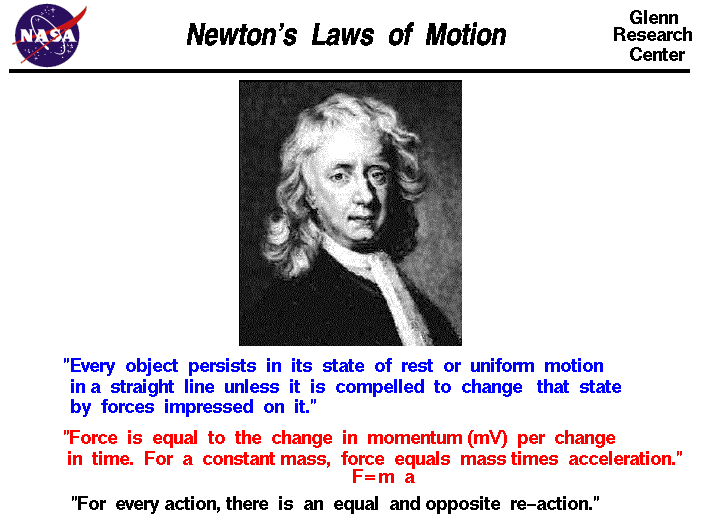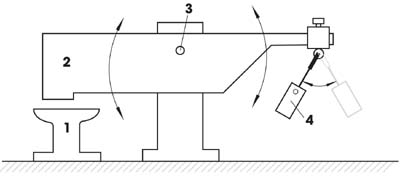Newton's 3rd Law of Motion states that there is an equal and opposite reaction. This is commonly believed to be a "law" as all "laws" of physics and nature are believed to be unbeatable. Laws of physics, nature, etc... are simply opinions based on what seems to hold true up to that point and is also based on conditional parameters. So, go outside of those parameters and these so-called laws of physics no longer apply. It truly is as simple as this.
Newton's Laws of Motion

The first law PERMITS perpetual motion. Basically, it does NOT require that something HAS to act upon something in motion. If a ball is propelled from a spacecraft and it doesn't interact with anything for billions of years until the end of time, it will be in perpetual motion NOT violating any "laws" of physics. This laws only says something will deviate IF and only IF something acts on it but does NOT require that something must act upon it.
The third law states there is an equal and OPPOSITE reaction but this is untrue. There is nothing that requires a reaction to OPPOSE movement as it is possible to have a reaction that assist further FORWARD movement increasing efficiency and COP (coefficient of performance). Below is one of the most simple ways to not only defy but totally make a mockery of the third law of motion. Only if a system is closed and both ends are rammed together will there be an opposing force.
Veljko Milković - Home Page - Zvanična prezentacija istraživača i pronalazača Veljka Milkovića
English: Veljko Milkovic - Home Page - Official presentation of the researcher and inventor Veljko Milkovi
http://www.veljkomilkovic.com/Images..._Lindemann.PDF PDF
Look at this: Two-Stage Mechanical Oscillator - A Mechanical Amplifier - Official presentation of the researcher and inventor Veljko Milkovic for a simple description.


This is basically a balance beam where the heavier side of the balance by where 2 is is balanced by the pendulum connected to it at 4. 3 is the pivot point and 1 is like an anvil for the hammer to swing down upon.
As 4 swings towards the left, it gets to a point at the top of its swing right before it swings back where it is weightless for a split second. At this exact moment, the the left end of the beam is much heavier and will smack down upon the anvil. Pendulum swings to the right being assisted by the force of GRAVITY and this balance out the beam for a moment so the hammer lifts up in balance with the pendulum, but the gravity assistance makes the pendulum side a heavier since there is added force in the momentum. The pendulum swings up towards the right side and at the moment the pendulum meets the top of its swing to the right, at the moment before it swings back down, it becomes weightless and the left side of the beam smacks down hard on the anvil.
The pendulum swings down and assisted with momentum and force of gravity makes it heavier than left side of beam and causes the hammer to lift up then pendumlum goes to top of swing to left and then becomes weightless the hammer swings down.
This isn't perpetual motion, when the pendulum is swung, if just left along WILL come to a dead stop...this isn't the point.
The point is that the OPPOSITE reaction helps the pendulum move in the other direction that causes continued motion of the hammer to move up and down. For each full swing in one direction and back to where it was, you get TWO FULL hammer smacks for each full swing of the pendulum. It take VERY LITTLE power to keep the pendulum swinging but you get an enormous amount of work at the anvil side!
This is an OPEN SYSTEM and all the work necessary to put into the system is a little bit of fly power to keep the pendulum swinging, which is virtually nothing. However, the work of the hammer on the anvil is about TWELVE times more than the input to the pendulum. It is open to the environment utilizing gravity to help power the system, swinging momenetum assisted by gravity and other external forces.
This is 12.0 COP meaning 12 times more work is done than the operator has to input to the system of just getting the pendulum to swing. This does NOT mean it is over 100% efficient. It may be 99% efficient and there are still losses.
Losses are the pendulum swinging against air resistance, friction on the pivot point, etc... Efficiency equals ALL the input energy. So conservation of energy is still "obeyed". What the operator puts in (a little bit of fly power) + what the environment puts in GRAVITY = total input. This compared to amount of work being done. That will probably be in the high 90%'s.
COP is total operator input (little bit of fly power) compared to all the work being done and is about 12 times more than the operator puts in so is 1200% of the input by operator. This is 12.0 COP
The rest of the input energy is from the environment.
So a mouse running on a wheel with a pulled fixed in a way to the pendulum could keep the pendulum going and this hammer or other side can be pumping water, hammering metal, etc... the inventor actually had a bunch of hand pumped flashlights and the hammer was smacking down on all these lights producing a lot of light with almost no input on the pendulum.
This is an open system and doesn't violate any laws of physics that related to open systems. Closed system thermodynamics like Newton's "laws" are irrelevant to these system.
Newton's Laws of Motion

The first law PERMITS perpetual motion. Basically, it does NOT require that something HAS to act upon something in motion. If a ball is propelled from a spacecraft and it doesn't interact with anything for billions of years until the end of time, it will be in perpetual motion NOT violating any "laws" of physics. This laws only says something will deviate IF and only IF something acts on it but does NOT require that something must act upon it.
The third law states there is an equal and OPPOSITE reaction but this is untrue. There is nothing that requires a reaction to OPPOSE movement as it is possible to have a reaction that assist further FORWARD movement increasing efficiency and COP (coefficient of performance). Below is one of the most simple ways to not only defy but totally make a mockery of the third law of motion. Only if a system is closed and both ends are rammed together will there be an opposing force.
Veljko Milković - Home Page - Zvanična prezentacija istraživača i pronalazača Veljka Milkovića
English: Veljko Milkovic - Home Page - Official presentation of the researcher and inventor Veljko Milkovi
http://www.veljkomilkovic.com/Images..._Lindemann.PDF PDF
Look at this: Two-Stage Mechanical Oscillator - A Mechanical Amplifier - Official presentation of the researcher and inventor Veljko Milkovic for a simple description.


This is basically a balance beam where the heavier side of the balance by where 2 is is balanced by the pendulum connected to it at 4. 3 is the pivot point and 1 is like an anvil for the hammer to swing down upon.
As 4 swings towards the left, it gets to a point at the top of its swing right before it swings back where it is weightless for a split second. At this exact moment, the the left end of the beam is much heavier and will smack down upon the anvil. Pendulum swings to the right being assisted by the force of GRAVITY and this balance out the beam for a moment so the hammer lifts up in balance with the pendulum, but the gravity assistance makes the pendulum side a heavier since there is added force in the momentum. The pendulum swings up towards the right side and at the moment the pendulum meets the top of its swing to the right, at the moment before it swings back down, it becomes weightless and the left side of the beam smacks down hard on the anvil.
The pendulum swings down and assisted with momentum and force of gravity makes it heavier than left side of beam and causes the hammer to lift up then pendumlum goes to top of swing to left and then becomes weightless the hammer swings down.
This isn't perpetual motion, when the pendulum is swung, if just left along WILL come to a dead stop...this isn't the point.
The point is that the OPPOSITE reaction helps the pendulum move in the other direction that causes continued motion of the hammer to move up and down. For each full swing in one direction and back to where it was, you get TWO FULL hammer smacks for each full swing of the pendulum. It take VERY LITTLE power to keep the pendulum swinging but you get an enormous amount of work at the anvil side!
This is an OPEN SYSTEM and all the work necessary to put into the system is a little bit of fly power to keep the pendulum swinging, which is virtually nothing. However, the work of the hammer on the anvil is about TWELVE times more than the input to the pendulum. It is open to the environment utilizing gravity to help power the system, swinging momenetum assisted by gravity and other external forces.
This is 12.0 COP meaning 12 times more work is done than the operator has to input to the system of just getting the pendulum to swing. This does NOT mean it is over 100% efficient. It may be 99% efficient and there are still losses.
Losses are the pendulum swinging against air resistance, friction on the pivot point, etc... Efficiency equals ALL the input energy. So conservation of energy is still "obeyed". What the operator puts in (a little bit of fly power) + what the environment puts in GRAVITY = total input. This compared to amount of work being done. That will probably be in the high 90%'s.
COP is total operator input (little bit of fly power) compared to all the work being done and is about 12 times more than the operator puts in so is 1200% of the input by operator. This is 12.0 COP
The rest of the input energy is from the environment.
So a mouse running on a wheel with a pulled fixed in a way to the pendulum could keep the pendulum going and this hammer or other side can be pumping water, hammering metal, etc... the inventor actually had a bunch of hand pumped flashlights and the hammer was smacking down on all these lights producing a lot of light with almost no input on the pendulum.
This is an open system and doesn't violate any laws of physics that related to open systems. Closed system thermodynamics like Newton's "laws" are irrelevant to these system.



Comment